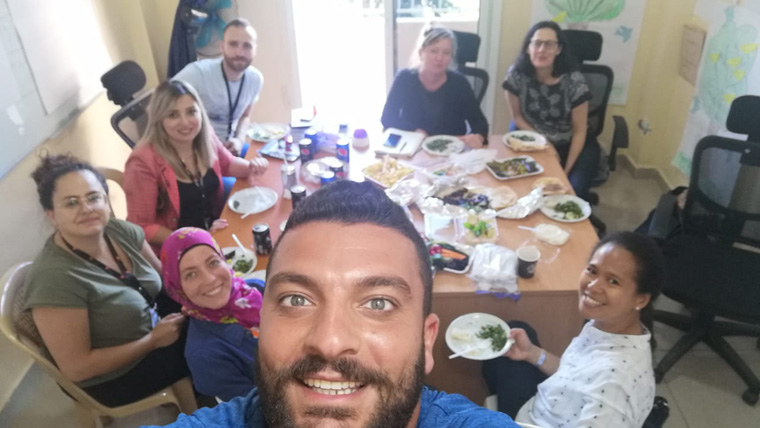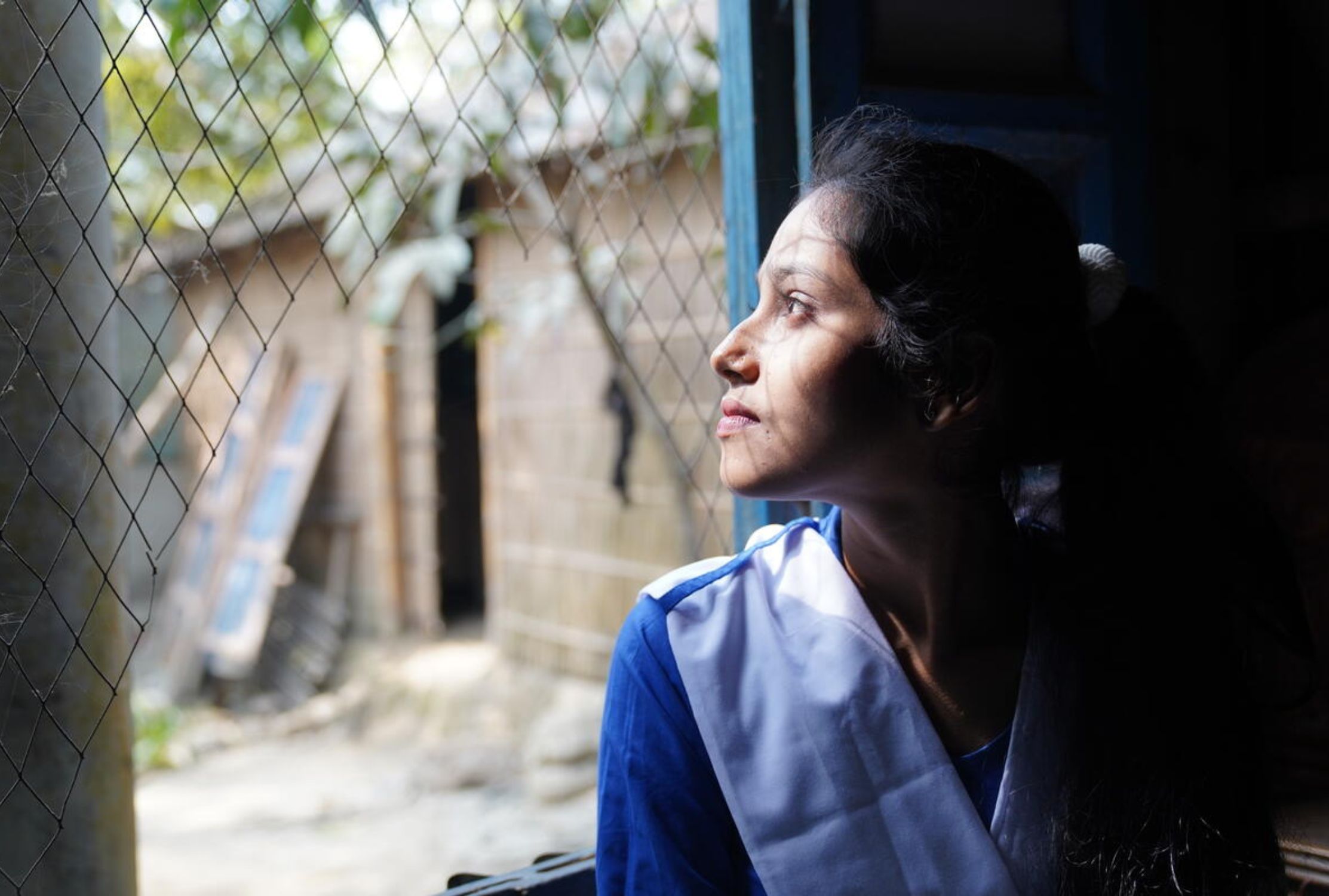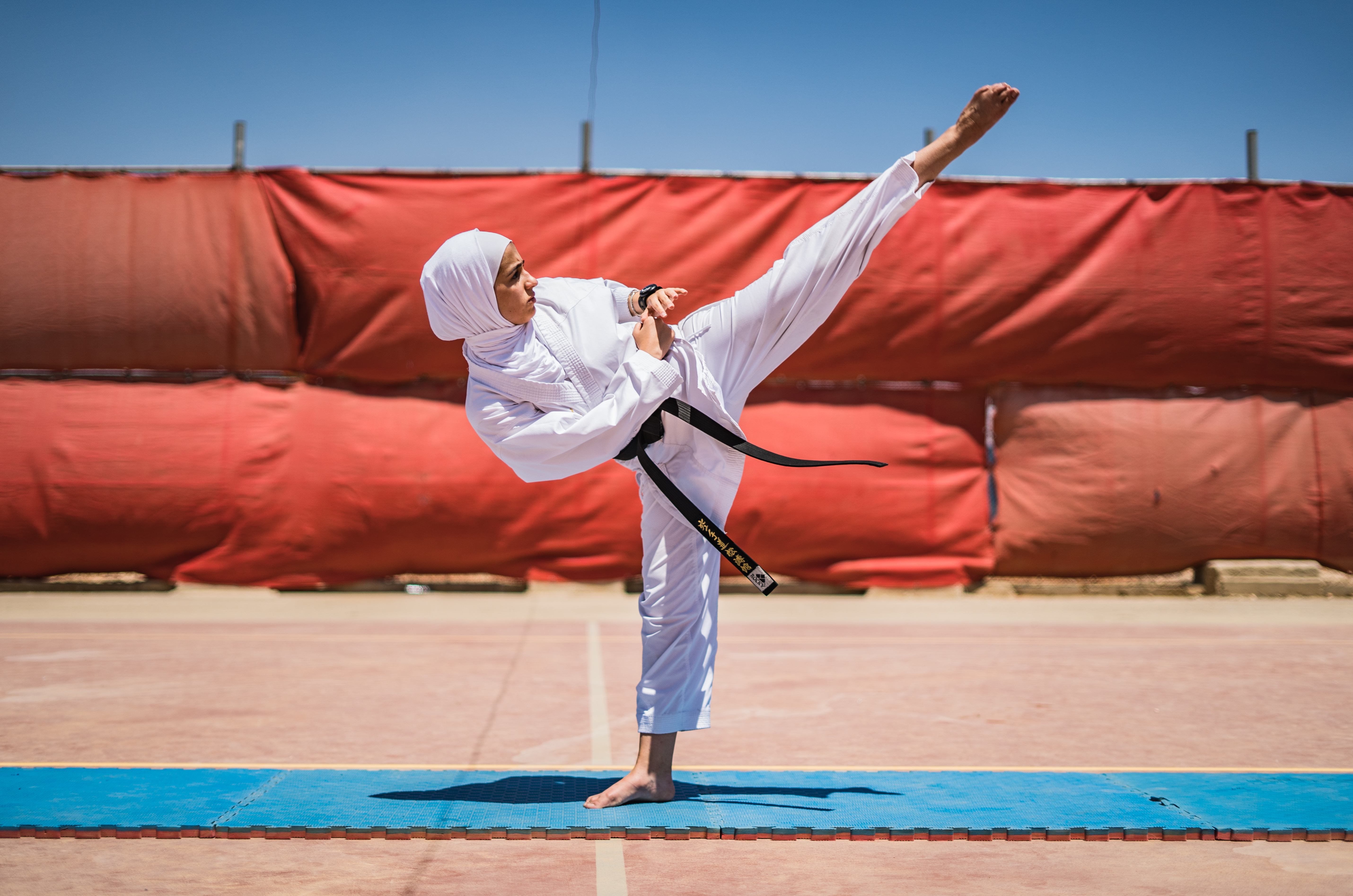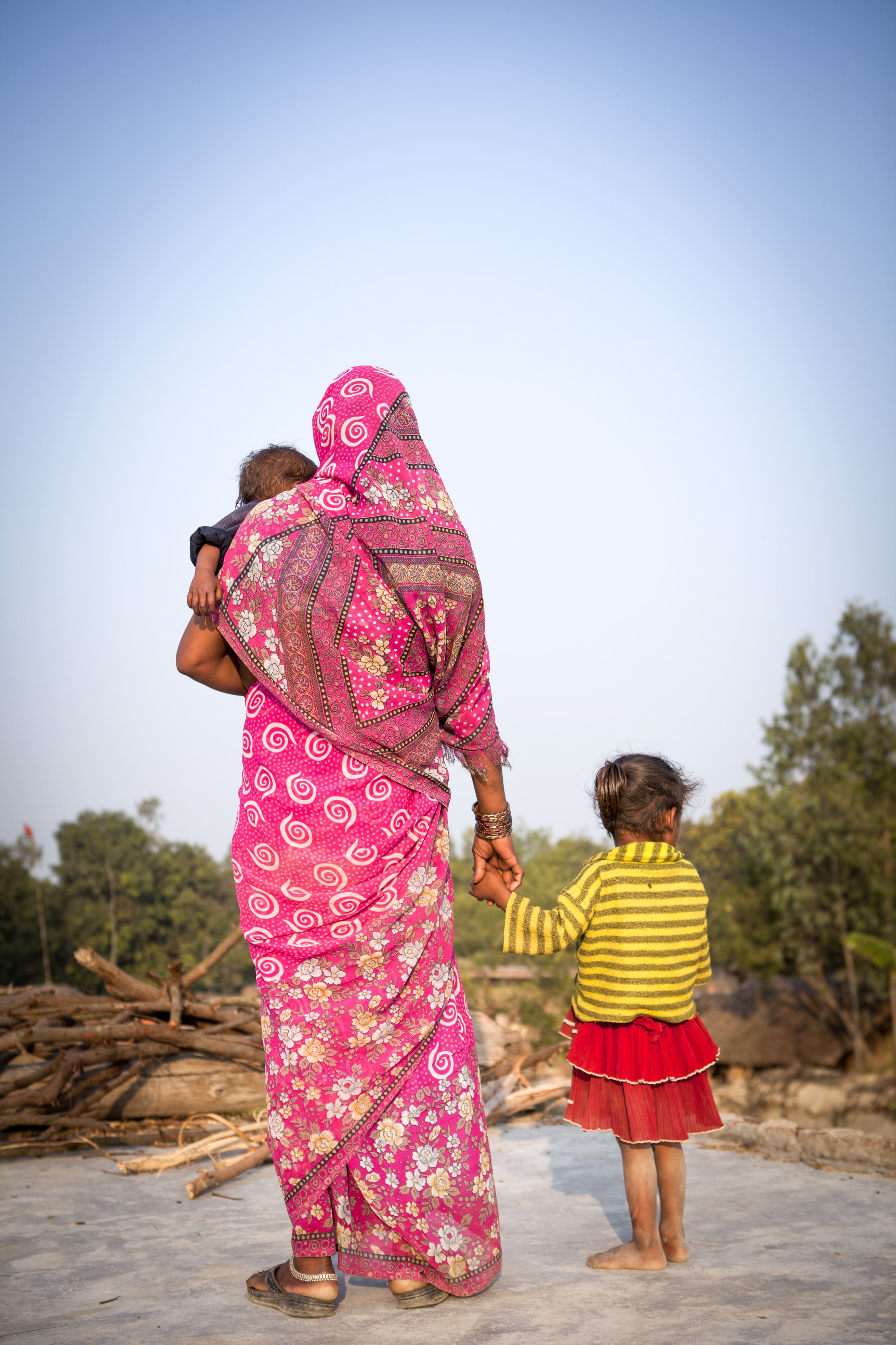
"If I had a magic wand"
The expert view on the link between child marriage and water
World Vision UK’s Senior Child Protection expert, Aimyleen Gabriel (bottom right in the above photo), looks at why child marriage is a growing problem.
About a year ago, I visited some of World Vision's work in Lebanon. On this trip, I had the chance to meet Syrian children at a refugee camp. I sat listening to them along with a couple of colleagues in a small room turned into a colourful child-friendly space. Their eyes beamed as they talked about their hopes and dreams. Albeit shy, the girls were not hesitant to say they want to become a doctor, a teacher or a lawyer someday.
I also met some women and mothers and learned that majority of them were married when they were still children. Later that day, I found myself troubled by the thought that very possibly, some of the girls I met may not see their dreams become reality because they could be married off at any time.
Back in their home country, many more children are facing the harshest threats to their well-being because of the war. For many families living in conflict, child marriage can be a desperate response to protect girls from heightened vulnerability to poverty and insecurity.
The statistics are shocking:
- 32,000 girls are married each day
- In Niger, 41% are in extreme poverty and there is a 76% rate of child marriages
- 13,000,000 more child marriages are likely because of the coronavirus pandemic
Basic services & child marriage
Child marriage is a serious violation of human rights and yet, it said that 12 million girls globally are married before they turn 18 – that’s more than 32,000 girls married each day! The highest rates of child marriage are found in Sub-Saharan Africa and South Asia.
Sadly, data suggest that the poorest countries suffering the worst level of access to basic services like health, water and education also have the highest rates of child marriage. Take Niger for instance – Niger sits at the bottom of 189 countries in the Human Development Index ranking and is also the country with the highest rate of child marriage at 76%. About 9.5 million or 41% of the population in Niger live in extreme poverty and struggle with the lack of basic water and sanitation facilities.

“My dream of becoming a doctor was over”
The lack of safe drinking water in communities and in schools is often associated with child marriage.
The story of Rahila, 14 years old from Afghanistan, (pictured above) is one example.
She told us, “I had to move to another village three years ago because of drought and insecurity…”
Because her family weren’t able to find a decent source of income, her father made a drastic decision to marry her off in exchange for a bride price of US$6,400.
Rahila, 14
Child bride from Afghanistan
“One night I told my father how I felt, and he got angry and slapped me. I was the loneliest person in the world. I was looking for a solution: either to change my father’s decision or kill myself,” she added.
Thankfully, through a World Vision programme, community volunteers intervened to convince her father to postpone the marriage.

Marriage as protection?
In refugee shelters, like Cox’s Bazar in Bangladesh, incidents of sexual violence can occur when girls go out to collect water for cooking or bathing. Walking miles to get to the nearest water point creates a feeling of insecurity among girls and parents.
This fear compels them to marry off their girls as a negative coping strategy to protect them from further violence as well as to protect the family’s honour.
Sanitation in school
In schools, adolescent girls need water for proper menstrual hygiene management. There is evidence that tells us that improved water and sanitation facilities in schools can reduce absenteeism and drop-out rates, especially among girls. And that, in turn, can reduce their likelihood of being married early.

Conflict and COVID-19 compound the issue
Child marriage is a complex issue, often tied to poverty and deeply held social and cultural norms. In conflict-affected countries, this could be driven by insecurity and displacement as well as the failure of the child protection system to respond to the most pressing needs of vulnerable families and children. In the coronavirus pandemic, the UNFPA estimates 13 million more child marriages globally will occur in the years following the crisis.
Earlier this year, World Vision spoke with 626 adolescent girls and boys, families, caregivers and community leaders in Northwest Syria to understand the impact of child marriage on their lives. Ten years into the conflict, 86% of all respondents said that child marriage has increased as result of the protracted crisis.
One father told us, “Life in camps is dangerous for boys and girls. It is not safe, nor are there any of the basic necessities of life. There is no medical treatment and they are deprived of an education.”
He continued, "It is not acceptable, but someone living with five children in one tent may marry his daughter off at a young age to try and give her a chance to live a better life. [Child marriage] has increased a lot recently."
Whilst child marriage can also be common among boys, girls are often more disproportionately impacted.
“If the girl is put under pressure to get married, she could think of running away or committing suicide. She could seek the help of someone regarding this problem, but if she does get married, she will be subjected to many problems like beatings, divorce, running away or committing suicide.” said 12-year-old Salma, from Northwest Syria.

Worth the risks?
Child marriage compromises a girl’s development - deprives her of education and puts her at risk of physical and psychological harm.
- Girls married early end up as teenage mothers who are often in danger of birth complications which can lead to death.
- They can also face domestic and intimate partner violence, risks of HIV and other sexually transmitted infections, stigma, and social isolation.
- Child marriage can also have huge consequences for society as it leads to more girls and boys missing education and thus perpetuating generations living in poverty.
- In World Vision’s effort to promote the voice of girls and boys affected by child marriage, I’ve heard many more stories of hope and fear.
Hadeel*, 16, Syria
I learned about Hadeel (*not her real name), 16 years old from North-west Syria.
“My father approved of the first man who asked for my hand in marriage. Our financial situation was deteriorating, and as part of the traditions in my country, young girls had to get married before they missed the boat. I regret getting married. I dreamt of living a different life; a life like any other girl would dream of.”
Zarghona, 15, Afghanistan
Then there is Zarghona, a girl from Afghanistan who was married at 15, with a false promise of a bride price.
“Now, I am at home washing, cleaning, cooking and thinking about a vague future. I lost my hope the day I was not allowed to go to school; the day that my husband didn’t keep his word and didn’t give money to my mother. If I had a magic wand, I would go to the past and would say “no” to this marriage. I was thinking I was helping my mother, but with my decision, I put my family in trouble.”
There is an end to child marriage
There is an end to child marriage – although it would take more than a wave of a magic wand. Tackling this issue needs to be a long-term commitment and investment.
Governments have a role to enforce laws to protect children and provide essential services – such as clean, accessible water and hygiene facilities at schools and in communities – so that girls and boys can go to school, and for families to earn a decent living and provide well for the children.
Yet, this is not enough.
World Vision’s work has seen the importance of also challenging the negative attitudes and social norms that promote gender inequality and child marriage and that this can be done by working with parents and communities, including local and faith leaders. It is also important that we put girls and boys at the centre of the conversation – because they too can be a part of the solution. When adolescent girls and boys are educated and equipped with life skills, they can express their views and negotiate decisions about their future.
Ending child marriage is a collective effort – we can do our small part by advocating, giving or praying. We can give girls like Hadeel and Zarghona a chance to see their future with a glimmer of hope – maybe not so much for themselves, but for their own children so that soon, they may live in a community free of child marriage.

What can you do?
Right now, you can do your part to provide clean water to communities where young girls are at risk of child marriage.
Access to clean water means girls can stay in education longer and are less likely to be married for financial reasons.



